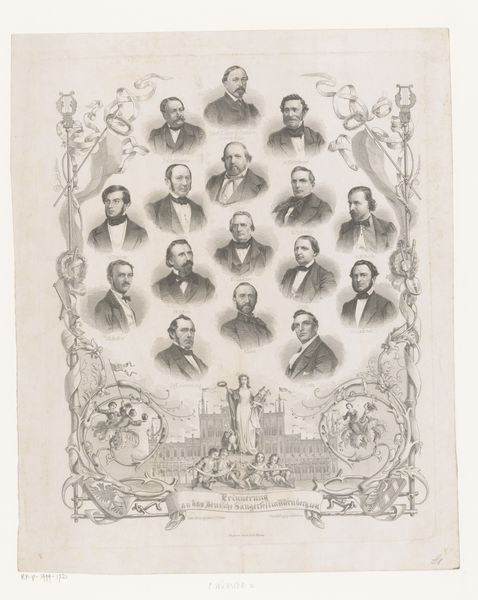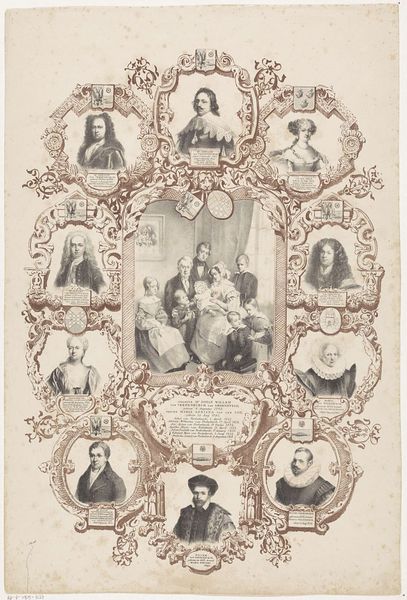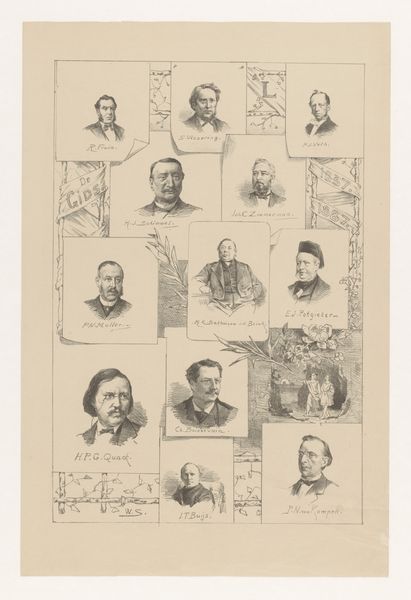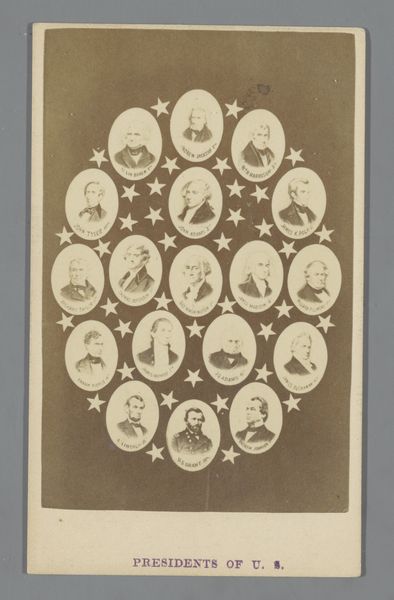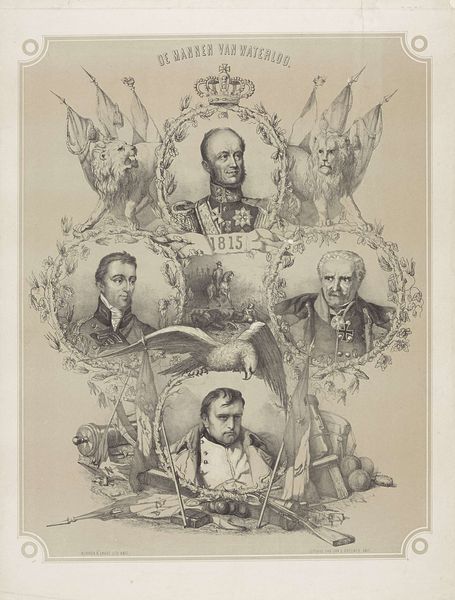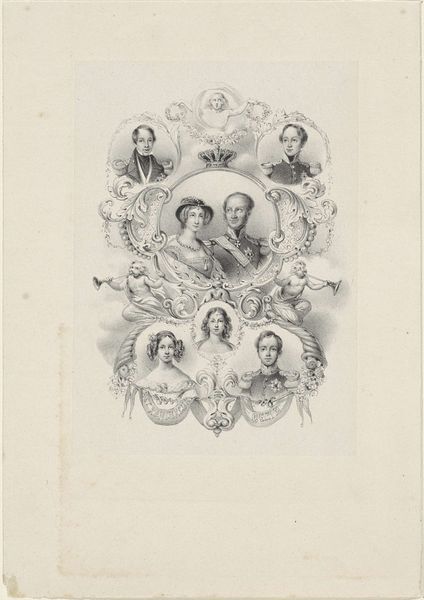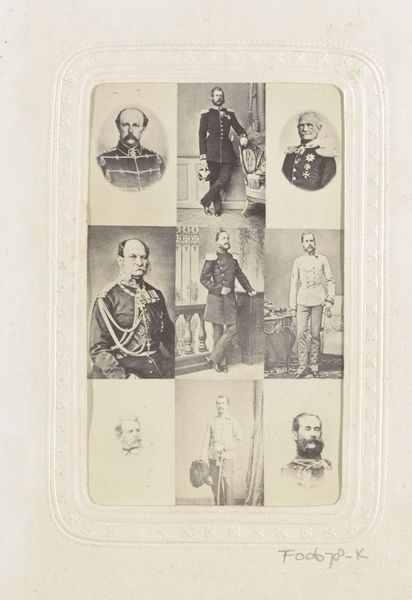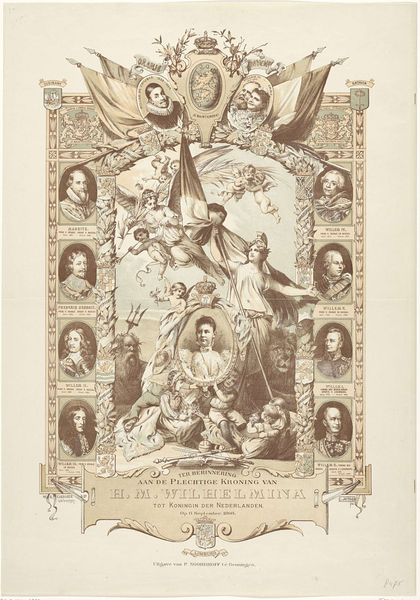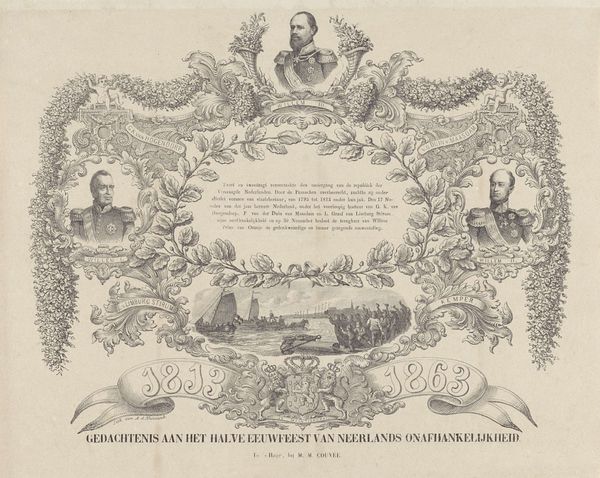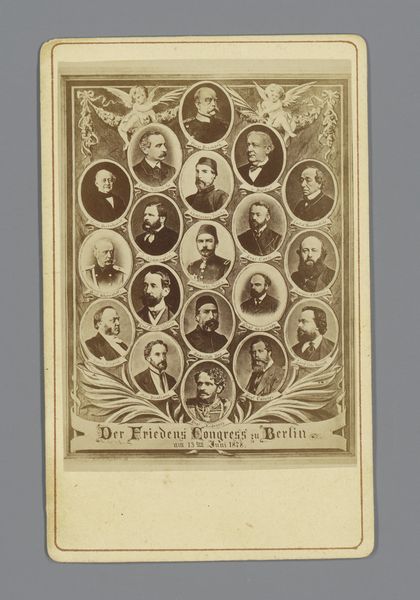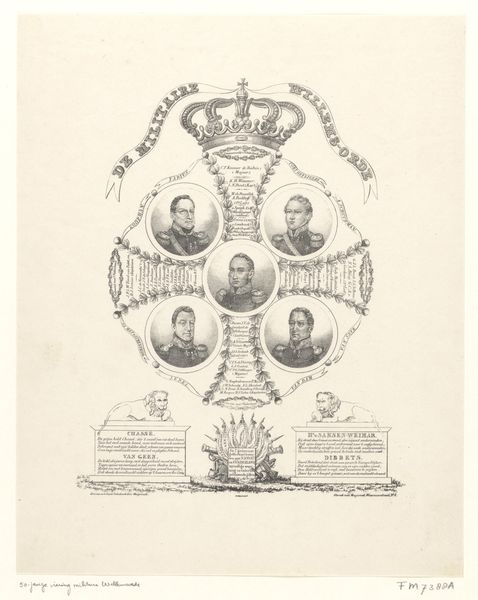
Gedenkplaat bij het 25-jarige regeringsjubileum van koning Willem III 1849-1874 1874
0:00
0:00
print, engraving
#
portrait
# print
#
pencil sketch
#
old engraving style
#
history-painting
#
academic-art
#
decorative-art
#
engraving
Dimensions: height 543 mm, width 431 mm
Copyright: Rijks Museum: Open Domain
This commemorative plate celebrates twenty-five years of King Willem III’s reign in the Netherlands. Produced in 1874 by an anonymous artist, it’s a lithograph, a then-modern printmaking technique that allowed for mass production. The plate features a central image of Willem III, surrounded by portraits of his predecessors, creating a visual lineage. Note the dates 1849 and 1874, marking the beginning and the anniversary of his rule. The symbolism is overt: wreaths, crowns, and royal coats of arms reinforce the idea of unbroken royal authority. What does this imagery tell us about the Netherlands at this time? Following a period of revolution, images of royalty were carefully deployed to reinforce national identity and social cohesion. Such objects were intended for display in homes and public spaces, quietly affirming the power of the monarchy. To understand the full meaning of this plate, we can consult historical archives, newspapers, and political pamphlets from the period. These sources help us contextualize the print and understand its role in shaping public opinion.
Comments
No comments
Be the first to comment and join the conversation on the ultimate creative platform.

